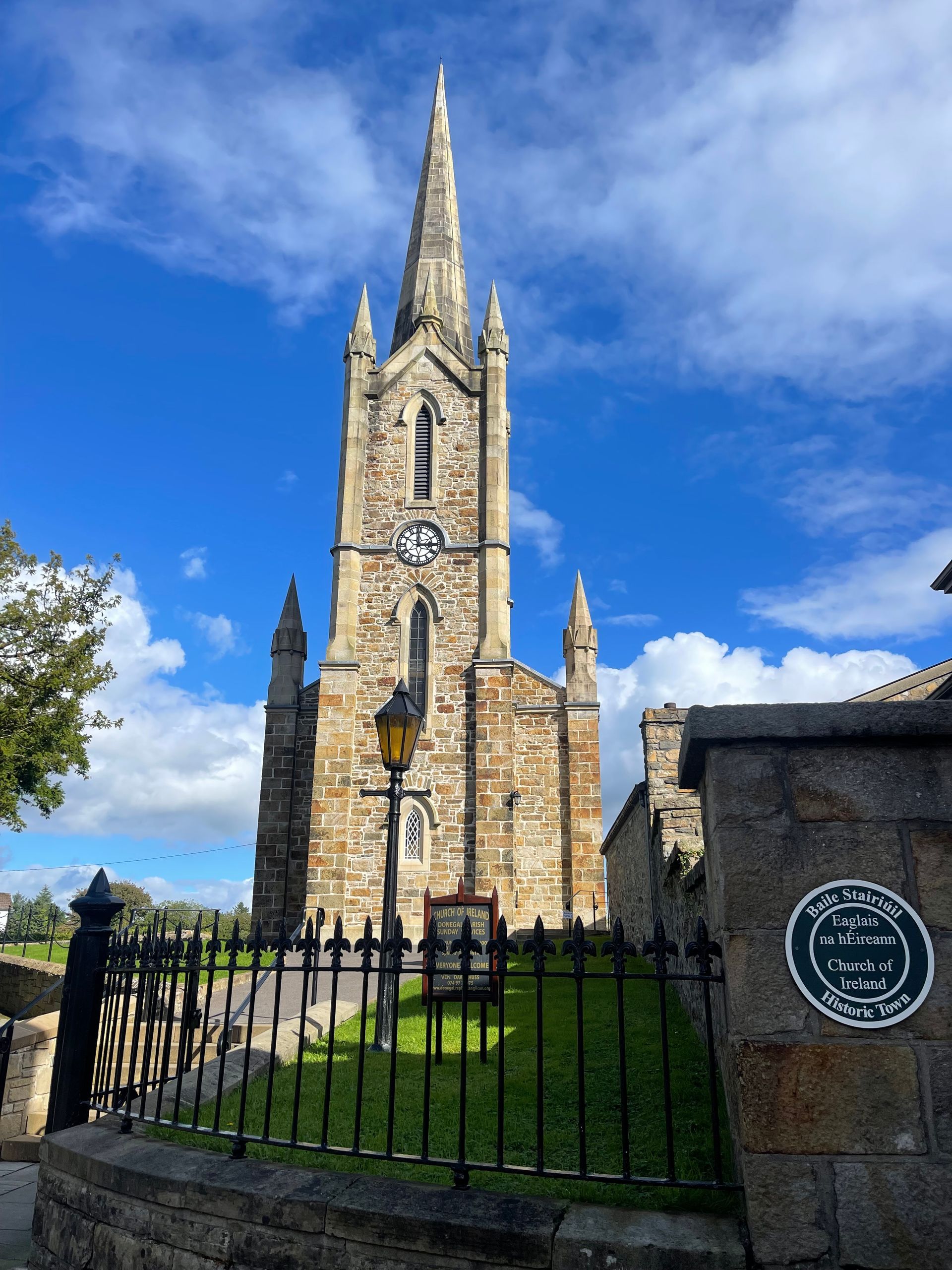The Allstop Compass Blog

💀 The Meaning Behind the Marigolds Each November 1–2, Mexico blooms with cempasúchil (marigolds), flickering candles, and music as families gather to honor loved ones. Día de los Muertos — the Day of the Dead — is a celebration of life remembered, not death mourned. Ancient Aztec beliefs combine with Catholic All Saints’ and All Souls’ Days to create a joyful ritual of reunion. Altars (ofrendas) overflow with flowers, favorite foods, and photos, inviting spirits to return for one more night of laughter and light. 🌆 Where to Experience Día de los Muertos 🕯 Oaxaca Watch candlelit parades, sand art, and brass bands weave through cobblestone streets in one of Mexico’s most traditional observances. 🎉 Mexico City The capital’s Mega Desfile (Grand Parade) dazzles with floats and costumes that inspired the Pixar film Coco. 🌊 Pátzcuaro, Michoacán Witness island vigils on Lake Pátzcuaro as candlelight dances across the water from Janitzio. ☀️ Riviera Maya & Cozumel Combine culture and relaxation — from resort-hosted workshops on skull painting to ancient Maya rituals honoring ancestors by the sea. 🎭 How to Celebrate Respectfully Observe gently: Ask permission before photographing altars or ceremonies. Shop local: Choose hand-painted skulls and embroidered textiles crafted by Indigenous artists. Taste tradition: Try pan de Muerto and atole from neighborhood bakeries. Join with heart: Many communities welcome visitors into parades and public celebrations — listen, learn, and celebrate with respect. 🌺 Why Travel in Early November November brings mild weather, smaller crowds, and authentic connection before peak winter season. Whether strolling through Oaxaca’s candlelit streets or relaxing seaside after a festival in Playa del Carmen, this is Mexico at its most colorful and heartfelt.

Creating a Family History Book One meaningful way to preserve your findings is by creating a family history book. This can be both a personal project and a treasure for your family. Here’s a quick guide on how to get started: Organizing Content: Begin by outlining the main sections of your book. These could include family tree charts, biographies, significant events, and ancestral town histories. Writing Narratives: Turn the data into engaging stories. Share anecdotes, cultural practices, and how historical events shaped your family’s journey. Incorporating Visuals: Integrate photographs, scanned documents, and maps to bring your narrative to life. Design and Format: Utilize online tools or professional services to format your book. Pay attention to layout and readability to make it visually appealing. Printing and Distribution: Decide whether you want to self-publish or use a print-on-demand service. Share copies with family members to ensure the legacy is preserved. Engaging the Younger Generation To ensure your family’s heritage continues to be celebrated, engage the younger generation. Here are some creative ideas: Interactive Family Tree Projects: Use digital tools to create an interactive family tree where younger family members can explore their ancestry. Storytelling Sessions: Host family gatherings where stories are shared. Encourage younger members to ask questions and share their thoughts on family history. Heritage Tours: Plan a family trip to ancestral towns. Experiencing the places firsthand can foster a deeper appreciation for their heritage. Hosting a Family Reunion Consider organizing a family reunion centered around your genealogy discoveries. This event can be an opportunity to reunite family members from various branches and celebrate your shared history. Plan activities that highlight your research, such as: Genealogy Workshops: Offer sessions where you can teach others how to start or continue their research. Cultural Activities: Include traditional food, music, or games that reflect your German heritage. Presentation of Your Findings: Share a presentation of your research, featuring stories, photos, and any surprises uncovered along the way. What’s Next in Your Ancestry Journey? Your genealogical research journey doesn't have to end here. There are endless possibilities to explore further: Exploring Other Lineages: If you have multiple ethnic backgrounds, consider researching other branches of your family tree. Documenting Oral Histories: Continue collecting stories and memories from older family members. Document these to preserve living history. Advancing Your Skills: Attend genealogy conferences or online courses to refine your research techniques. Continuing the Legacy As you reflect on your journey into your German ancestry, remember that genealogy is more than just names and dates. It's about the stories, the connections, and the legacy you build for future generations. Keep the curiosity alive, and let each new discovery deepen your appreciation for your family's unique story.
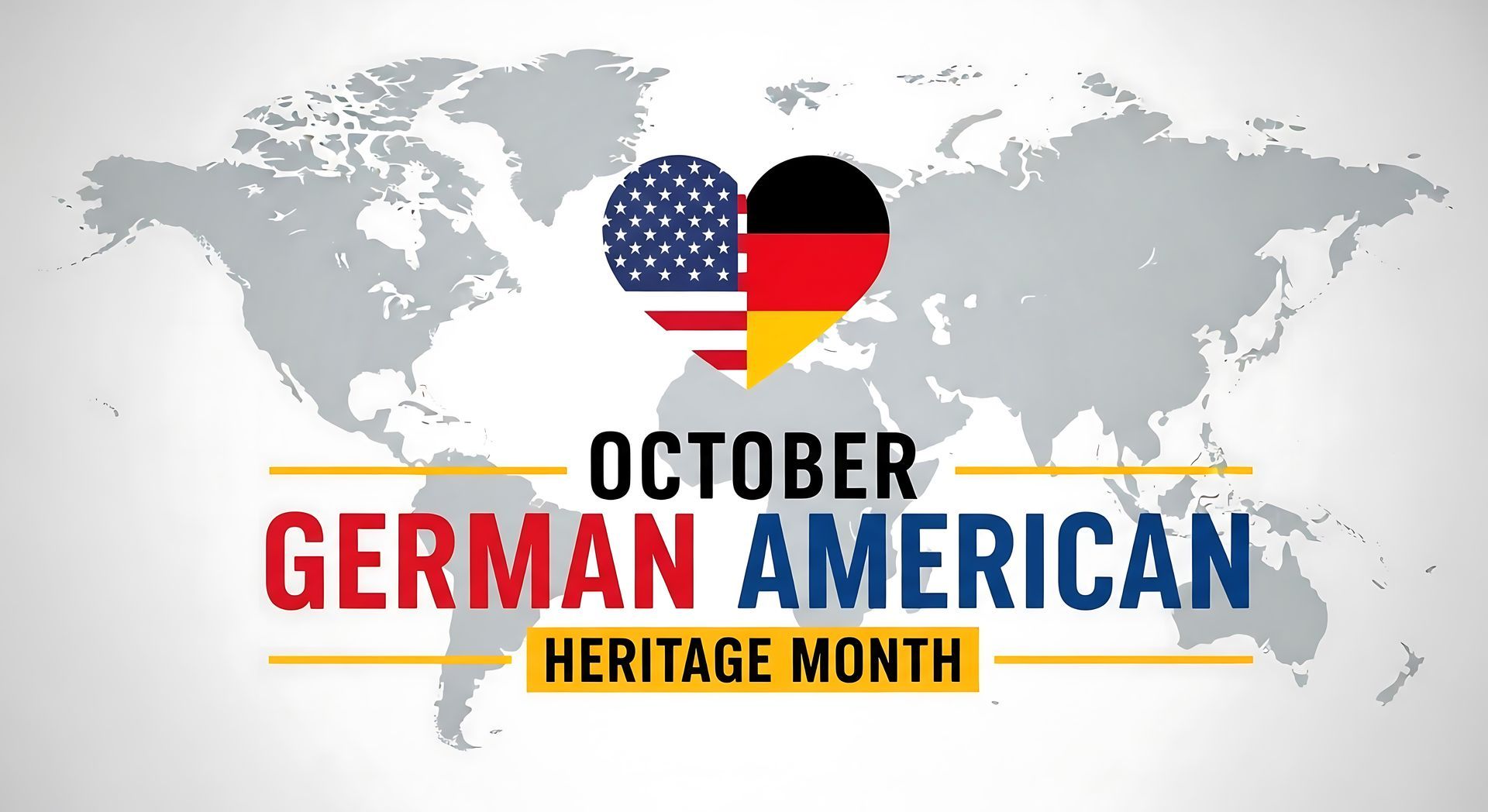
Understanding DNA Testing for Genealogy DNA testing is a powerful tool to reveal your ethnic background and connect you with distant relatives who share a common ancestry. Two popular types of DNA tests are autosomal and Y-DNA or mtDNA testing. Autosomal DNA Testing: This is the most common type of DNA test, analyzing your entire genome. It provides estimates of your ethnic makeup and can connect you with relatives up to the 5th to 8th cousins. Y-DNA and mtDNA Testing: These tests trace your direct paternal line (Y-DNA) or maternal line (mtDNA). They are more specialized and can provide insights into your deep ancestral origins. Companies like AncestryDNA, 23andMe, and MyHeritage offer easy-to-use kits that can help you further explore your heritage. Once you receive your results, take the time to interpret them carefully. Look for connections to known relatives and any surprises in your ethnic background that might reveal previously unknown connections. Joining Genealogical Societies Genealogical societies can be invaluable resources for budding genealogists. Many of these societies specialize in immigrant ancestors, and specifically, German ancestry. Here’s how they can aid your research: Access to Exclusive Resources: Many societies offer access to databases, historical records, and publications that aren’t available elsewhere. They often have collections of family trees, documents, and expert articles. Networking Opportunities: Societies provide a platform to connect with other enthusiasts and professionals. Networking can lead to the exchange of research tips and sharing of family information. Workshops and Conferences: Engage in society-organized events that offer workshops led by experts, providing insights and techniques tailored to your research. Dedicated Support: Many societies have staff or volunteers who can offer guidance on various aspects of genealogy, including interpreting records or using online tools effectively. Examples of Noteworthy Societies The German Genealogy Group: Focused on German ancestry, offering a newsletter, access to databases, and educational resources. The American Historical Society of Germans from Russia (AHSGR): Provides insights and resources specifically for descendants of Germans who settled in Russia, now living in America. The International German Genealogy Partnership (IGGP): Connects German genealogy societies worldwide to facilitate research. Making New Connections As you delve deeper into your genealogy research, don't be surprised if you uncover relatives across the globe. DNA matches might lead to family branches you never knew existed, while society connections could put you in touch with distant cousins. Use these newfound connections to exchange stories and documents, enriching your family’s narrative. Preserving and Sharing Your Findings As you compile your findings, consider ways to preserve and share your work. Create a digital archive of documents, photos, and records you've collected. Consider writing a family history book to pass down to future generations, ensuring your research is both engaging and educational. Your journey doesn't end here. Keep exploring, sharing, and celebrating your German ancestry, and continue to build on the foundation you've painstakingly created. Each discovery enriches your understanding of where you come from, adding depth to your family story.
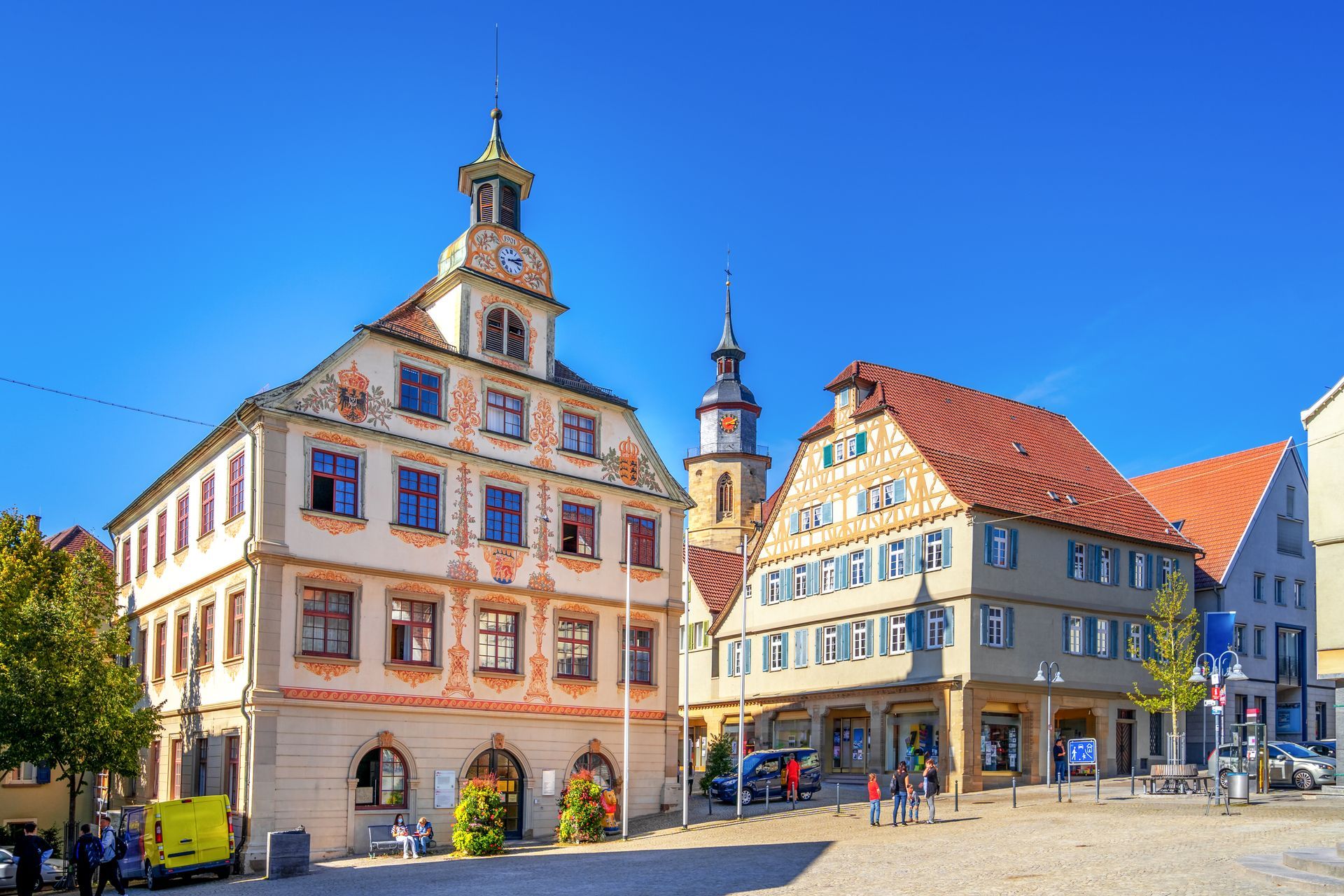
Starting Your German American Ancestry Journey You're ready to discover your roots, but where do you begin? Let’s start with the basics of gathering information that can guide your journey. Gathering Family Documents and Oral Histories Start by collecting what you already have at home. Old letters, birth certificates, and photographs can offer clues. Even if documents seem unrelated, they often contain hidden gems. Chat with family members, especially older relatives. Their stories might seem fragmented, but each piece adds to the puzzle. Remember to take notes while listening. Every detail counts when you're building your family history. Next, focus on organizing this information. Create a simple spreadsheet or use a notebook. Write down names, dates, and places that come up. This will help you see connections and spot gaps in your knowledge. You'll soon find that these initial steps form the foundation of your family history research. Online Ancestry Resources: Ancestry and FamilySearch With your basic info in hand, it’s time to dive into the online world. Websites like Ancestry and FamilySearch offer vast databases that can connect you with long-lost relatives. Start by entering the information you've gathered. These platforms can reveal records you didn't know existed, like immigration papers or census records. Explore the features available on these sites. For example, Ancestry offers hints and suggestions based on the data you input. FamilySearch provides free access to records and a community of researchers eager to help. Trying different search strategies can lead to surprising discoveries about your ancestors. Exploring Local Church Archives Churches were central to communities in the past. They often kept detailed records of births, marriages, and deaths. Visiting local church archives can uncover information not available online. Begin by identifying the churches your ancestors likely attended. Call ahead to schedule a visit, as some archives require appointments. When visiting, be prepared to handle delicate documents with care. Bring a camera or smartphone to capture images of records. Sometimes, these archives offer insights into your ancestors' lives beyond names and dates. You'll find that personal anecdotes or community involvement can add depth to your family history research. Connecting with Ancestral Regions Linking your findings to specific regions in Germany is the next step. Discovering ancestral towns can provide context and meaning to the names and dates you've collected. Matching Ancestral Regions to Modern-Day Towns Germany's geography and political boundaries have changed over time. Understanding these shifts is key to matching ancestral regions with current towns. Use online maps and historical references to trace these changes. Websites dedicated to genealogy can also provide historical context. Look for clues in your documents that mention town names or regions. Compare them to modern maps to pinpoint exact locations. This connection offers a clearer picture of where your ancestors lived, helping you visualize their world. Here are some examples of Matching regions to " Modern "day towns to regions they traveled from in North/South Dakota and Minnesota to start. Black Sea (Odessa/Kherson region, today southern Ukraine & Moldova) Kuchurhan (formerly Straßburg; includes former Baden) – Odesa Oblast, Ukraine→ Strasburg ND; Hague ND; Zeeland ND (Emmons Co.) — Many Catholic “Germans from Russia” from the Kutschurgan colonies settled Emmons County; Strasburg ND was named for the Kutschurgan Straßburg. Lymanske (formerly Selz & Kandel) – Odesa Oblast, Ukraine→ Hague ND; Strasburg ND; Selz (historic post hamlet) ND — Kutschurgan district mother colonies that fed Emmons Co. Catholic settlements. Kam’yanka (formerly Mannheim) & Shcherbanka (formerly Elsass) – Odesa Oblast, Ukraine→ Emmons & McIntosh Cos., ND; McPherson Co., SD — Additional Kutschurgan mother colonies whose emigrants appear among “German Russian” settlers in south-central ND/SD. Bessarabian villages (e.g., Kulm; Hoffnungstal; Leipzig; Arzis/Arcis – today in Moldova/Ukraine)→ Kulm ND; Lehr ND; Glen Ullin area ND; Eureka / Java / Artas / Delmont SD — Documented migration waves 1882–1886 from Bessarabia into south-central SD and then into ND (Kulm Township & Kulm ND). grhs.org+1 Volga & Volhynia (today Russia/Ukraine/Poland) Volga colonies (e.g., Norka, Balzer, Frank, Grimm—Saratov Oblast, Russia)→ Scattered families in ND/SD/MN; larger streams to KS/NE/CO — Present in Dakota/Upper Midwest rosters alongside Black Sea Germans (smaller share than Black Sea to ND). germansfromrussiasettlementlocations.org Volhynian centers (e.g., Zhytomyr, Stanisławówka – today Ukraine/Poland borderlands)→ SE SD & MN communities — Listed among Dakota/Upper Midwest Germans-from-Russia lineages. germansfromrussiasettlementlocations.org German states (direct-from-Germany streams to Minnesota & the Upper Midwest) Ulm / Neu-Ulm area (Baden-Württemberg/Bavaria, Germany)→ New Ulm MN — Founded by the German Land Company & Turner Settlement Society; name chosen because many settlers were from Württemberg (Ulm). Minnesota Historical Society Rhineland, Westphalia, Bavaria (cities/towns across these provinces)→ Stearns, Benton & Morrison Counties MN (St. Cloud area; “Father Pierz” corridor) — Fr. Francis X. Pierz’s 1850s letters drew Catholic immigrants—“sturdy sons of Rheinland, Westphalia, and Bavaria”—who founded dozens of parishes and farm hamlets. Cologne / Hamburg / Gotha (German Rhineland & Thuringia)→ Carver County MN towns named Cologne, Hamburg, New Germany — German immigrants concentrated here in the 1860s; place-names reflect origins. Minnesota Historical Society South Dakota German-Russian heartland Multiple Black Sea colonies (Kutschurgan, Beresan, Glückstal, Bessarabia)→ Eureka SD & McPherson County; Hosmer SD; Java SD; Delmont SD; Artas SD — Classic “Germans from Russia” zone with substantial documentation and museum collections. Visiting Ancestral Villages for Deeper Insight Imagine walking the same streets your ancestors once did. Visiting ancestral villages offers a unique perspective that records cannot provide. Start planning your heritage travel with details from your research. Contact local heritage groups or museums in these areas—they often host tours or have additional resources. When you visit, pay attention to the surroundings. Architecture, local customs, and regional foods can all tell a story. By immersing yourself in the environment, you gain a deeper connection to your family history. Remember, the longer you wait to explore these places, the more you miss out on experiencing your heritage fully. By following these steps, you'll uncover layers of your family history you never knew existed. Dive into your German American ancestry journey and let the past illuminate your present.

There’s a moment every family historian dreams about — when the stories you’ve heard all your life suddenly connect with the land beneath your feet. For me, that moment came in Donegal, Ireland, walking in the footsteps of my Daugherty ancestors. It was always a dream for me to visit Ireland. It was everything I had hoped for. Come with me or let me plan a journey that exceeds your expectations. From the Archives and quaint towns and streets to the Gelato, coffee and endless roadside black berries (so good with morning breakfast) and let's not forget the beaches complete with surfing! I love beaches and shelling as you might know so, visiting the beach is top on my list always. Let's dive into Donegal. The Daugherty (also spelled Doherty, Dougherty, or O’Dochartaigh) name is deeply rooted in Donegal. It’s everywhere — in parish records, carved into ancient stone, and tied to castles that still stand as silent witnesses to centuries of history. Yet it wasn’t until I came here that those Daugherty roots felt real. It was always just something I put at the top of my paper in school. Tracing the Past in the Archives My day began in the hushed rooms of the Donegal County Archives and Central Library in Letterkenny. Shelves filled with estate papers, parish registers, and local newspapers revealed fragments of lives lived long ago. As I followed the Daugherty name through records and maps, Donegal transformed from a distant homeland into something much more intimate — a place of origin, a place where my story began. From Paper to Place Armed with names and townlands, I set out into the Donegal landscape. In Buncrana, the ruins of O’Doherty’s Keep tower above Lough Swilly — once home to the powerful O’Dochartaigh clan. Standing there, I felt the line between legend and lived history blur. Later, among the moss-covered stones of a parish graveyard, I found the Daugherty name again. This time not in ink, but etched into the earth itself. It was as if the ancestors I had chased through dusty records were waiting there to be remembered. A Living Legacy The Daugherty story is not locked in the past. In Donegal, the name thrives — on storefronts, in conversations, in the music of village pubs. The warmth of the people makes it clear: this heritage is alive and welcoming. And beyond the names, Donegal itself tells the story. The sweeping views from Grianán of Aileach, the wild Atlantic along Malin Head, the rhythm of daily life — all of it becomes part of your own family narrative when you stand here. Coming Home Genealogy is more than research; it is connection. In Donegal, I realized that family history isn’t only about discovering who my ancestors were. It’s about coming home to a piece of myself. ✨ At Allstop Travel, we believe journeys like this are the most powerful kind of travel — ones that connect you to your past while enriching your present. Whether you’re tracing the Daugherty name in Donegal or uncovering your own heritage elsewhere, we craft personalized heritage experiences that blend research, culture, and meaning. Ready to walk in your ancestors’ footsteps? Let us create your homecoming.
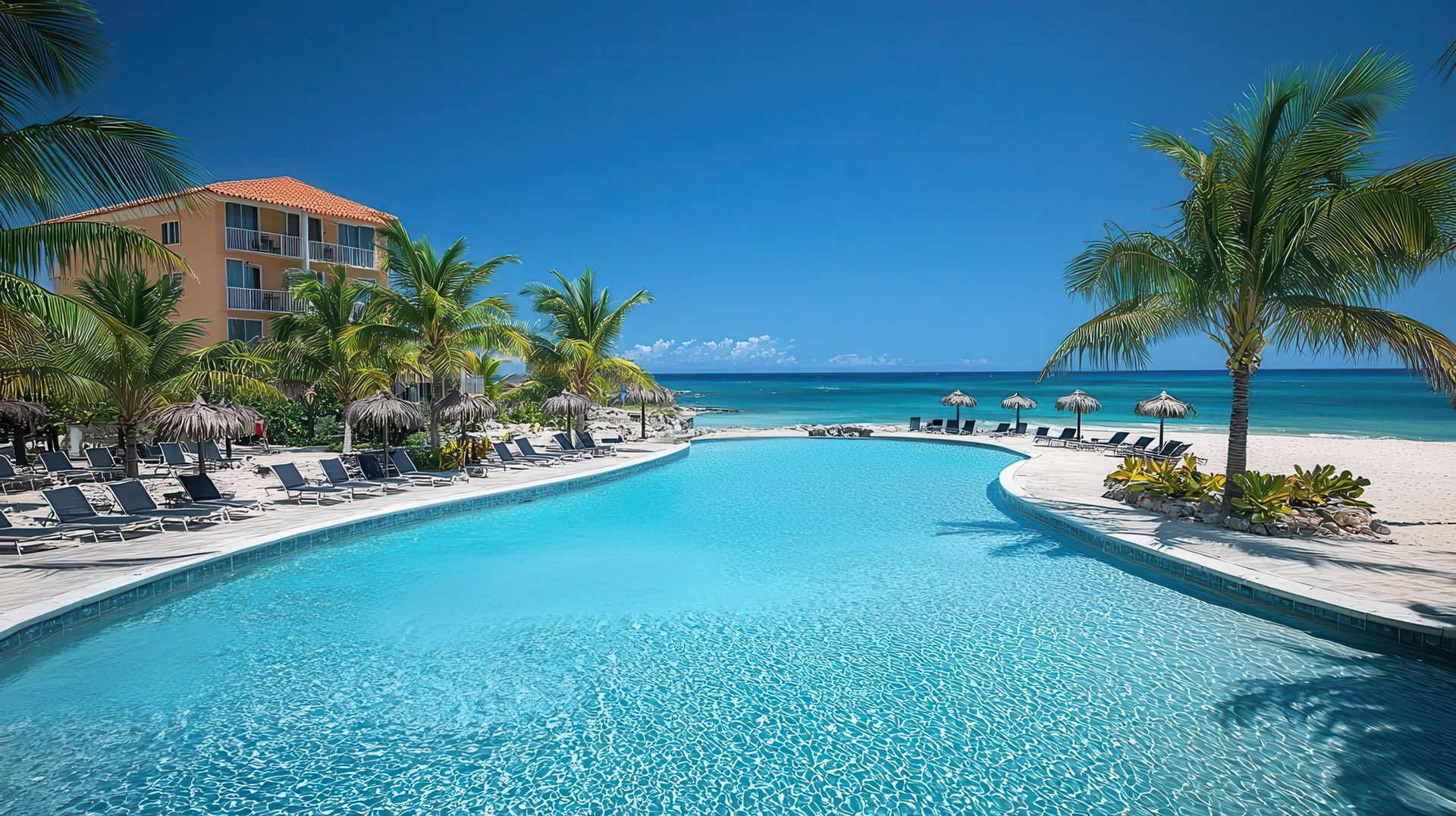
All-inclusive travel is versatile and cater to a wide range of travel types. Here are some of the most common types of travel where all-inclusive resorts are a popular choice: 1. Family Vacations Families often choose all-inclusive resorts for their convenience and amenities tailored to all ages. Resorts may offer kids' clubs, water parks, family suites, and activities for both children and adults. For example, Dreams Resorts and Beaches Resorts are known for their family-friendly offerings, including supervised kids' programs and family-oriented entertainment. 2. Romantic Getaways and Honeymoons Couples seeking a romantic escape often opt for adults-only all-inclusive resorts like Sandals or Secrets Resorts. These properties provide luxurious amenities, private accommodations, and romantic settings such as beachfront dinners or overwater bungalows. 3. Destination Weddings All-inclusive resorts are a top choice for destination weddings due to their comprehensive wedding packages, which often include ceremony setup, reception options, and group discounts. Resorts like Sandals, Dreams, and Hard Rock Hotels specialize in destination weddings and offer perks like free wedding packages with qualifying stays. 4 . Group Travel (Friends or Multi-Generational Trips) Groups of friends or multi-generational families enjoy all-inclusive resorts for their ability to cater to diverse interests. Resorts like Hyatt Ziva and Iberostar Selection offer activities for all ages, from water sports to evening entertainment, making them ideal for group travel. 5. Adventure Travel Some all-inclusive resorts, like Hotel Xcaret in Mexico, cater to adventure seekers by including access to eco-parks, zip-lining, snorkeling, and other outdoor activities. These resorts combine luxury with unique experiences, making them perfect for travelers who want more than just relaxation. 6. Corporate Retreats and Incentive Travel All-inclusive resorts are also popular for corporate events and incentive trips. They provide meeting spaces, group dining options, and team-building activities, all within a stress-free, pre-paid environment. Resorts like Hyatt Ziva Los Cabos and Sandals Ochi are known for accommodating corporate groups. 7. Budget-Conscious Travel Travelers looking for value often choose all-inclusive resorts because they bundle accommodations, meals, drinks, and activities into one price. Budget-friendly brands like Sunscape Resorts or Bahia Principe cater to this market while still offering a quality experience. 8. Wellness and Relaxation Wellness-focused travelers may choose boutique all-inclusive resorts like Zoëtry Wellness & Spa Resorts, which emphasize health, relaxation, and personalized service. These resorts often include spa treatments, yoga classes, and organic dining options. 9. Celebrations (Birthdays, Anniversaries, etc.) All-inclusive resorts are a great choice for milestone celebrations, offering group packages, private event spaces, and special perks for the guest of honor. Resorts like Hard Rock Hotels and Karisma properties are known for their ability to host memorable events. Each type of travel benefits from the convenience, variety, and value that all-inclusive resorts provide.
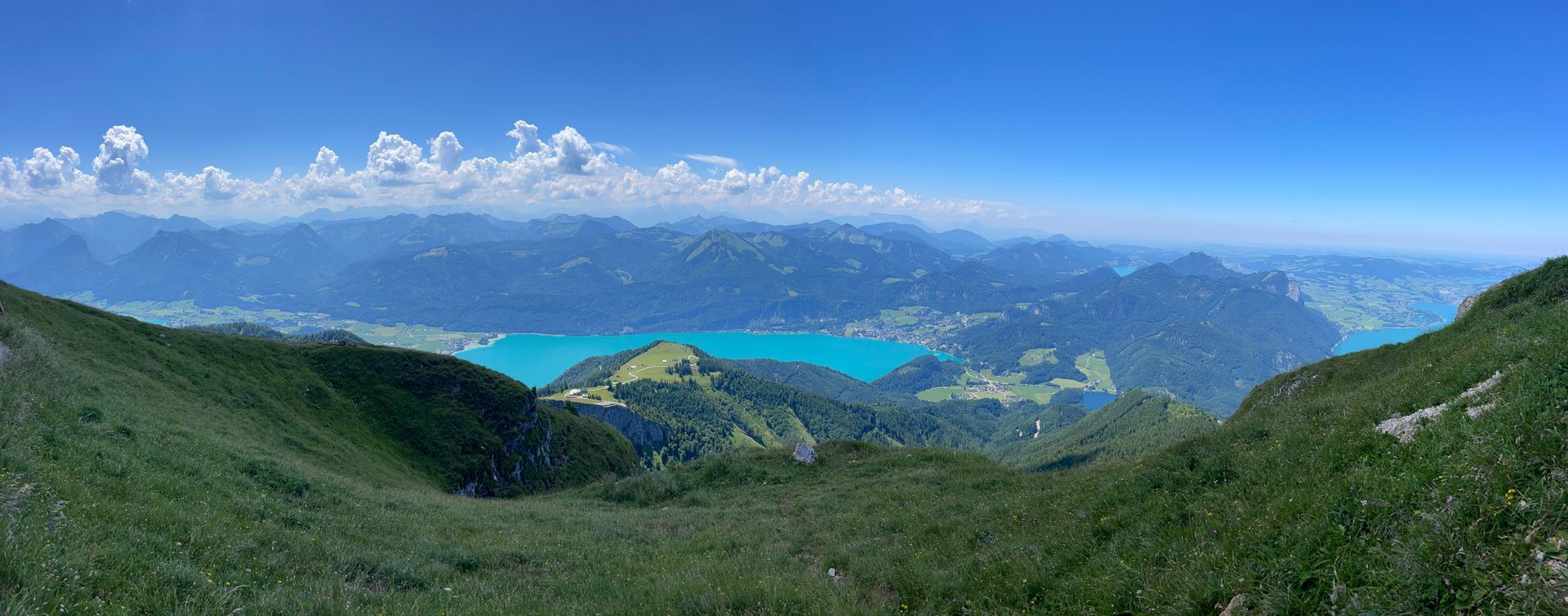
If you're dreaming of a summer getaway that mixes the thrill of outdoor adventures with a rich dose of history and culinary treats, then Salzburg and its neighboring gems, St. Gilgen and Lake Wolfgang, should be at the top of your list. Imagine exploring the iconic filming locations of "The Sound of Music," from the enchanting Mirabell Gardens to the charming gazebo, all while soaking up the vibrant cultural tapestry of Salzburg. Savor the thrill of a self-drive trip through the picturesque Austrian countryside, where each twist and turn offers breathtaking views and hidden treasures. You'll not only satisfy your wanderlust with hikes around Lake Wolfgang and rides on the historic Schafberg Bahn, but you'll also indulge your taste buds with a hands-on Apple Strudel class and a delectable Salzburger Nockerl at Edelweiss Cooking School. Ready for an unforgettable adventure that blends nature, history, and gastronomy? Let's guide you through the perfect itinerary for a three-day exploration of this stunning region. Exploring Salzburg's Cultural Gems: Salzburg is a treasure trove of cultural landmarks and historical sites, enchanting visitors with its rich history and architectural beauty. This section dives into some of the most iconic locations, especially those made famous by "The Sound of Music." Sound of Music Locations: The hills around Salzburg are alive with memories of "The Sound of Music." This beloved film left its mark on the city, drawing fans from all over the world. The movie's locations, such as the Leopoldskron Palace and the Nonnberg Abbey, serve as picturesque settings that highlight Salzburg's charm. Leopoldskron Palace: Featured as the family home in the movie, this palace is a stunning example of Rococo architecture. Visitors love to stroll around its serene lake, capturing the essence of scenes from the film. Nonnberg Abbey: Known for its rich history and as the site where Maria was a postulant, this abbey offers a glimpse into Salzburg's religious heritage. The gothic architecture and peaceful surroundings make it a must-visit. Whether you're a fan of the film or simply enjoy beautiful architecture and history, these locations provide a fascinating insight into Salzburg's cultural allure. Marabelle Gardens and Gazebo: Marabelle Gardens is a floral paradise nestled in the heart of Salzburg. This meticulously maintained garden is not only a botanical delight but is also famous for its appearance in "The Sound of Music." The gardens offer a serene escape from the bustling city. Enchanted Setting: The gardens are a vibrant tapestry of color, with a wide variety of plants and flowers. Visitors can wander along the paths, enjoying the symphony of scents and sights. Hellbrunn Palace: Famous Gazebo: Known for the romantic song "Sixteen Going on Seventeen," the gazebo is a delightful stop for fans of the film. The Palace has tours, lovely ponds with fish in them, playgrounds and plenty of room for children to run and explore. Simply stunning area to ride a bike in on a tour or self-drive as I did. This combination of horticulture and cinematic history makes Marabelle Gardens and Hellbrunn Palace a captivating destination for all who visit Salzburg. Culinary Adventures in Salzburg: Salzburg isn't just about history and landscapes; it's also a hub for culinary delights. From traditional Austrian dishes to hands-on cooking classes, this section explores the gastronomic wonders awaiting you in Salzburg. Apple Strudel Class: Ever wanted to make a traditional Austrian apple strudel? Salzburg offers the perfect opportunity to roll up your sleeves and try your hand at this classic dessert. The Apple Strudel class provides a step-by-step guide to creating this delicious treat. Preparation: Fresh apples, flour, sugar, and spices. - All ingredients are prepared just show up! Making the Dough: Learn the art of stretching the dough until it's paper-thin. This delicate process is crucial for achieving the perfect texture. This was super fun to watch. Done as a 4–5-person group effort. Don't worry if you're a single person there is always help. Filling and Baking: Fill the dough with a mixture of apples, raisins, cinnamon, and sugar before rolling it up and baking it to golden perfection. When I took this class, it was a full class, and it was amazing! Children are welcome. What better way to learn about a countries culture than through food? The instructors were friendly and very knowledgeable in selecting substitute ingredients that might not be available in other countries. Everything is clean, set-up and ready to go. This hands-on experience is not only educational but also a fun way to immerse yourself in Austrian culinary culture. Mastering Salzburger Nockerl Salzburger Nockerl is a signature dessert that represents the sweet side of Salzburg. Light, fluffy, and delicious, it’s a dish that every visitor should try at least once. Historical Background: This dessert dates back to the 17th century, with its airy texture symbolizing Salzburg's snow-capped mountains. It’s a delightful blend of eggs, sugar, and vanilla, baked to a dreamy consistency. Cooking Class Experience: Join a class at the Edelweiss Cooking School to master the art of creating this unique dish. Guided by expert chefs, you’ll learn the intricacies of achieving the perfect rise and flavor. Tasting Delight: Enjoy the fruits of your labor with a taste test and take home the recipe to recreate it for friends and family. This culinary venture not only satisfies your sweet tooth but also enriches your travel experience with a taste of local tradition. You can even choose to purchase a small cookbook as a souvenir and make some of the wonderful dishes of Austria for your friends and family. Scenic Escapes Around Lake Wolfgang: Beyond Salzburg's cultural heart, the scenic beauty of Lake Wolfgang and its surrounding areas offers a tranquil retreat. This section explores the natural wonders and leisure activities available in this picturesque region. When we arrived in Munich and rented the rental, I was so tired. I saw very little of the countryside as we drove out of the city on the famed Autobahn headed to the Austria village of St. Gilgen. I first saw the Alps on another visit to Germany. (That included Oktoberfest and Neuschwanstein Castle.) The Alps call to you much like the Rocky Mountains of the United States. Like a long-lost friend waiting to take you on an adventure. When we arrived in the area of Lake Wolfgang see, it was simply stunning. Beautiful blue green water and breathtaking mountains all around. St. Gilgen Ferry and Schafberg Bahn: St. Gilgen Ferry is a delightful way to explore Lake Wolfgang. The ferry ride provides breathtaking views and connects you to charming lakeside villages. Peaceful Cruise: The ferry offers a relaxing journey across the lake, allowing you to soak in the vibrant scenery and tranquil waters. -Restrooms and simple drink services are provided. The boats are very clean and comfortable seating. Cultural Stops: Disembark at various stops to explore local attractions, such as traditional Austrian villages and historical sites. The Schafberg Bahn This train is an iconic cog railway that takes you to the summit of the Schafberg Mountain. This thrilling ride offers panoramic views of the surrounding landscape. Mostly NOT recommended for people who are accessibly challenged. The trains are small; there is quite a large step to access the train car. At the top while you can enjoy the view, there is a lot of steep climbing to get to the restaurants and other things to see. Breathtaking Views: As the train ascends, you'll be treated to stunning vistas of the lake and Alps. It's a photographer’s paradise. Summit Experience: At the top, enjoy hiking trails and a cozy mountain hut where you can relax with a refreshing drink. This combination of ferry and railway adventures provides a memorable way to experience Lake Wolfgang's natural allure. Lake Wolfgang Hiking Trails: Lake Wolfgang is not just about relaxation; it's an adventurer's haven with its extensive network of hiking trails. These paths offer varying levels of difficulty, catering to both seasoned hikers and casual walkers. Popular Trails: Riedlweg Loop: A gentle path that winds through lush forests and offers stunning views of the lake. Perfect for a leisurely stroll. Falkenstein Ridge: For a more challenging trek, this trail offers steep climbs and rewarding vistas from the top. It's ideal for those seeking a bit of exertion. Schafberg Summit Trail: Adventurers can hike up to the Schafberg summit, enjoying panoramic views that stretch across the lakes and mountains. With trails to suit every preference, Lake Wolfgang is a hiker's dream, providing opportunities to explore the serene beauty of the Austrian countryside.

As the Midwest begins to thaw into summer, it's easy to forget the long, frosty months that lie ahead. But for those who’ve weathered a few winters, the idea of a warm, sun-soaked escape becomes more than a daydream — it becomes a necessity. Now is the perfect time to imagine yourself on a beach, drink in hand, soaking up the sun while snow falls quietly back home. Why wait until the cold sets in to plan your getaway? Let this be the year you trade icy roads for ocean breezes — and have your winter escape ready before the first frost arrives. 🌴 U.S. Destinations (No Passport Required) 1. Phoenix / Scottsdale, Arizona Weather: 65–75°F in winter Why Go: Desert scenery, golf, spa resorts, hiking (Camelback Mountain), MLB Spring Training. Ease: Direct flights from Bismarck or Fargo on Allegiant or Delta (seasonal). 2. Las Vegas, Nevada--Codi is a destination Specialist Weather: 60–70°F in winter Why Go: Shows, casinos, Red Rock Canyon hikes, good winter deals. Ease: Direct flights from Bismarck (Allegiant), usually under 3 hours. 3. San Diego, California--Misty is a native of San Diego-Destination Specialist Weather: 65–75°F, sunny and coastal Why Go: Beaches, zoo, food, harbor cruises, laid-back vibe. Ease: 1-stop flights from Bismarck or Fargo via Denver or Minneapolis. 4. Orlando, Florida- - Misty is a Destination Specialist for this area Weather: 70–80°F Why Go: Theme parks (Disney, Universal), warm pools, golf. Ease: 1-stop flights from Bismarck/Fargo. 🏝️ Mexico & Caribbean (Passport Needed) 5. Cancún / Riviera Maya, Mexico-- Misty is a Destination specialist for this area Weather: 80–85°F, perfect beach weather Why Go: All-inclusive resorts, beaches, Mayan ruins, cenotes. Ease: Charter flights from Bismarck (usually in Jan–March), or 1-stop via MSP or DEN. 6. Puerto Vallarta, Mexico Weather: 75–85°F Why Go: Pacific coast beaches, old-town charm, whale watching. Ease: Charter or 1-stop via Denver or Minneapolis. 7 . Punta Cana, Dominican Republic Weather: 80–85°F Why Go: All-inclusive resorts, white sand beaches. Ease: 1-stop flights via Minneapolis or Chicago (winter charters available).

Top Destinations You Can Travel to from the U.S. Without a Passport Traveling internationally often requires a passport, but did you know there are several incredible destinations you can visit without one? Whether you're looking for tropical beaches, rich cultural experiences, or stunning landscapes, U.S. citizens can explore a variety of locations without the need for a passport. These destinations are either U.S. territories or places where alternative forms of identification, such as a government-issued ID, are sufficient. Let’s dive into the top destinations you can travel to from the U.S. without a passport. 1. Puerto Rico Puerto Rico is a Caribbean gem that offers a mix of vibrant culture, historical landmarks, and breathtaking beaches. As a U.S. territory, you can travel to Puerto Rico with just a government-issued ID. Explore Old San Juan’s cobblestone streets and colorful colonial architecture, visit the El Yunque National Forest for lush hiking trails, or relax on the pristine beaches of Isla Verde. Puerto Rico also offers unique experiences like bioluminescent bay tours in Vieques and delicious local cuisine, including mofongo and fresh seafood. 2. U.S. Virgin Islands The U.S. Virgin Islands—St. Thomas, St. John, and St. Croix—are another tropical paradise accessible without a passport. Known for their crystal-clear waters and white sandy beaches, these islands are perfect for snorkeling, diving, and other water activities. St. Thomas is famous for its shopping and vibrant nightlife, while St. John offers tranquil beaches and the Virgin Islands National Park. St. Croix combines history and culture with attractions like the Cruzan Rum Distillery and the historic town of Christiansted. 3. Hawaii Although Hawaii is part of the United States, its unique Polynesian culture and stunning landscapes make it feel like an exotic getaway. From the lush rainforests of Maui to the volcanic landscapes of the Big Island, Hawaii offers diverse experiences for every type of traveler. Enjoy surfing on Waikiki Beach, hiking the Na Pali Coast in Kauai, or exploring the active volcanoes at Hawaii Volcanoes National Park. No passport is needed to enjoy this tropical paradise. 4 . Alaska For those seeking adventure and natural beauty, Alaska is an excellent choice. Known as "The Last Frontier," Alaska offers breathtaking landscapes, including glaciers, mountains, and wildlife. Cruise through Glacier Bay, explore Denali National Park, or take a scenic train ride on the Alaska Railroad. While Alaska is part of the continental U.S., its remote location and unique environment make it a bucket-list destination for many travelers. 5. Guam Located in the Pacific Ocean, Guam is a U.S. territory that combines rich history with stunning beaches. Visitors can explore World War II historical sites, enjoy water sports like snorkeling and diving, or relax on Tumon Bay’s sandy shores. Guam’s Chamorro culture adds a unique flavor to the island, with traditional dances, local cuisine, and cultural festivals. A government-issued ID is all you need to experience this tropical destination. 6. American Samoa American Samoa is another U.S. territory in the South Pacific that offers a blend of natural beauty and cultural heritage. Known for its rugged landscapes, coral reefs, and traditional Samoan culture, this destination is perfect for travelers looking to escape the hustle and bustle. Visit the National Park of American Samoa for hiking and wildlife spotting, or immerse yourself in the local culture through traditional ceremonies and cuisine. 7. Northern Mariana Islands The Northern Mariana Islands, including Saipan, Tinian, and Rota, are a U.S. territory in the Pacific Ocean. These islands are known for their stunning beaches, historical sites, and outdoor activities. Saipan offers world-class diving spots, while Tinian is famous for its historical significance during World War II. Rota provides a quieter, more laid-back experience with beautiful beaches and hiking trails. 8. Key West, Florida While technically part of the continental U.S., Key West feels like a tropical escape. Located at the southernmost tip of Florida, this island city is known for its laid-back vibe, colorful architecture, and vibrant nightlife. Explore the Ernest Hemingway Home and Museum, enjoy water activities like snorkeling and kayaking, or simply relax on the beach. Key West is easily accessible by car, plane, or ferry, making it a convenient option for a passport-free getaway. 9. Cruise to the Caribbean If you’re looking for a passport-free international experience, consider a closed-loop cruise departing from a U.S. port. These cruises visit destinations in the Caribbean, such as the Bahamas, Jamaica, and the Cayman Islands, and allow U.S. citizens to travel with just a government-issued ID and a birth certificate. While a passport is not required for these cruises, it’s always recommended to carry one in case of emergencies, such as needing to fly back to the U.S.. 10. Canada and Mexico (Limited Circumstances) While a passport is generally required for air travel to Canada and Mexico, U.S. citizens can enter these countries by land or sea with alternative documentation, such as a passport card or an enhanced driver’s license. These options are ideal for road trips or cruises to nearby destinations. However, it’s important to check the specific entry requirements for your destination before traveling. Travel Tips for Passport-Free Destinations - Always carry a government-issued ID, such as a driver’s license, when traveling to these destinations. - Check the specific entry requirements for your destination, as some may have additional documentation needs. - Consider travel insurance to cover unexpected situations, such as medical emergencies or trip cancellations. - If traveling on a cruise, ensure you understand the cruise line’s policies regarding identification and reentry to the U.S.. Conclusion Traveling without a passport doesn’t mean you have to miss out on incredible experiences. From tropical islands to rugged landscapes, these destinations offer a variety of adventures for U.S. citizens. Whether you’re looking for relaxation, cultural immersion, or outdoor exploration, there’s a passport-free destination waiting for you. Start planning your next trip today and enjoy the convenience of traveling without the need for a passport.
